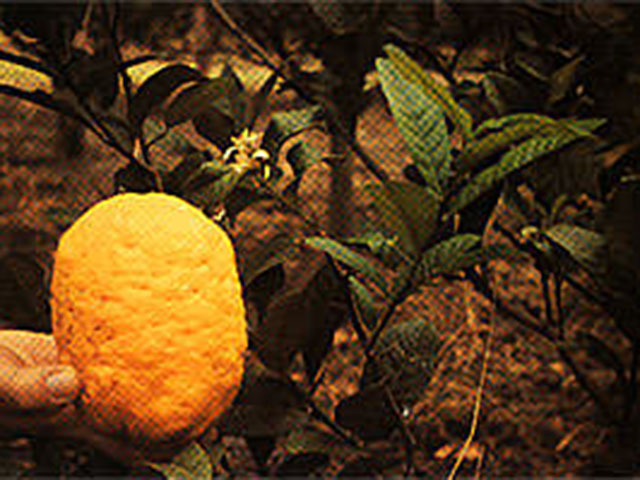Main menu
Common skin conditions

NEWS
Join DermNet PRO
Read more
Quick links
Common name: |
Citron, also called tipolo or moli-apatupatu in Samoa and kou-yuan in China. Theophrastus wrote of it as the Persian, or Median Apple. It has also called the Citrus Apple. |
Botanical name: |
Citrus medica |
Family: |
Rutaceae |
Origin: |
South-East Asia originally. |
Description: |
The citron is the fruit of slow-growing citrus reaching 2-4 m high; the flower buds are large and white or purplish in colour. The fruit is fragrant, mostly oblong and varies in size from 9 cm to over 30 cm long. |

citron
Uses: |
The most important part of the Citron is the peel. After partial de-salting and boiling to soften the peel, it is candied in a strong sucrose/glucose solution. The candied peel is sun-dried or put in jars for future use. The candied peel is widely employed in the food industry, especially as an ingredient in fruit cake, plum pudding, buns, sweet rolls and candy. |
Allergens: |
|
Allergy: |
Unfortunately Citron, like all citrus, contains coumarins which are chemicals that can cause a photo-toxic or sun-induced reaction (contact photosensitivity). Usually, the reaction occurs when the fruit has been in direct contact with the skin which is then exposed to sunlight. It causes an acute, often blistering dermatitis, which then darkens the skin, often for many months. Reactions have also been reported following airborne contact with Citron containing fragrances and essential oils used in aromatherapy. In addition, contact urticaria, irritant dermatitis and allergic contact dermatitis from contact with Citron have all been reported without the additional sun exposure. There do not, however, appear to be any reports of phototoxic reactions from eating the candied fruit. |
Cross-reactions: |
Balsam of Peru. |
Other information: |
There have also been reports of contact dermatitis to coloured dyes used to make the fruit look more attractive (the fruit is often coated with carnauba wax which may contain a variety of yellow dyes). |
Patch test: |